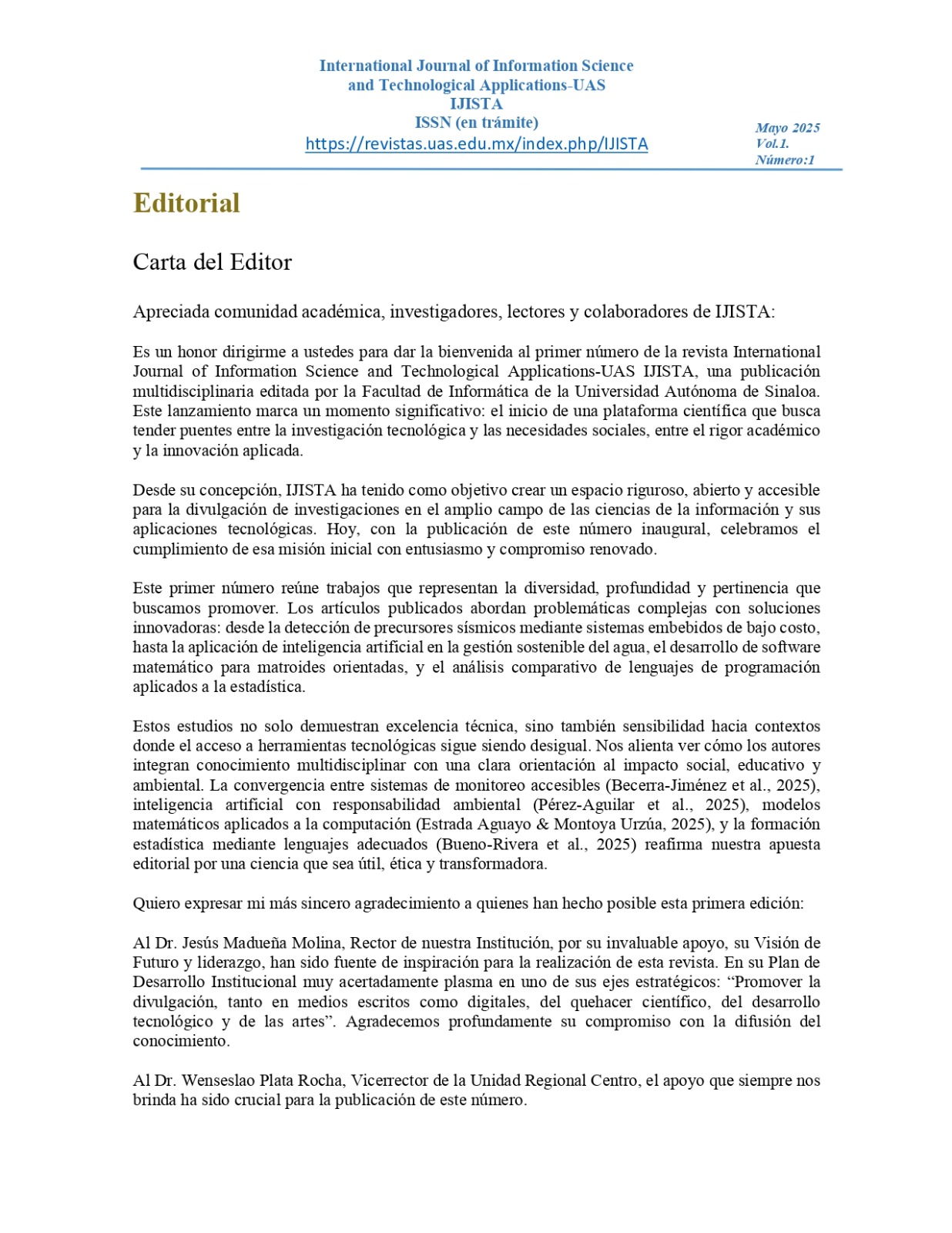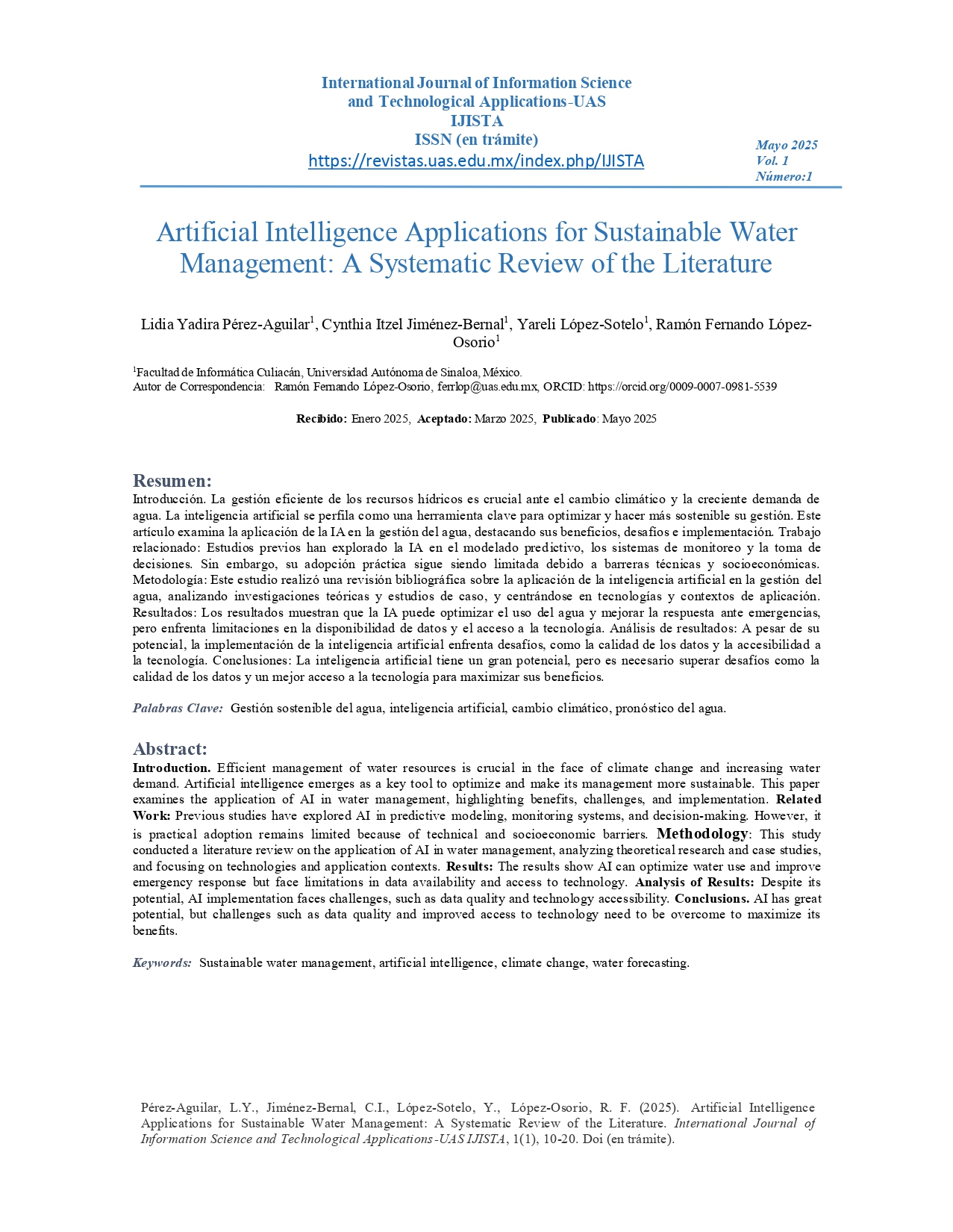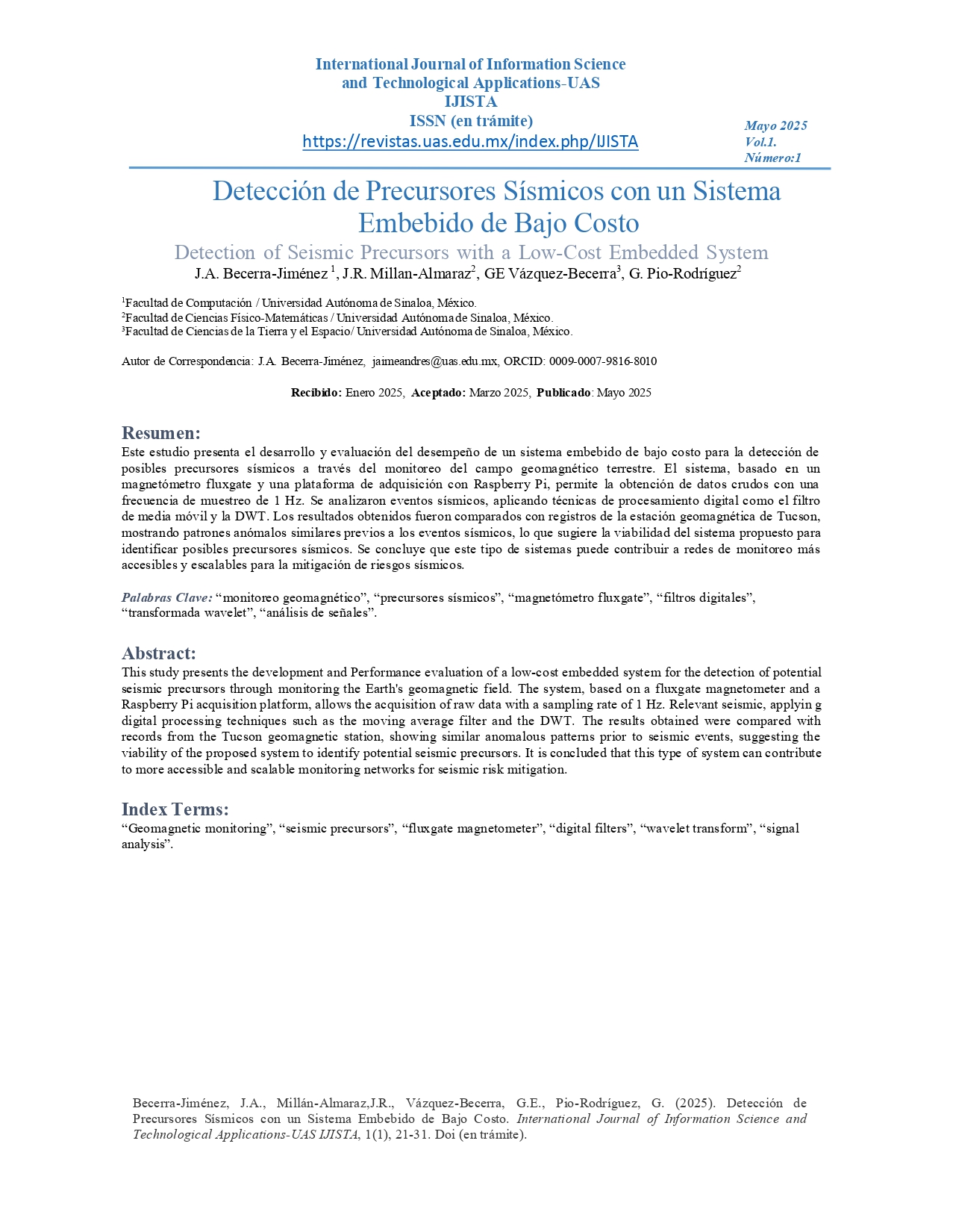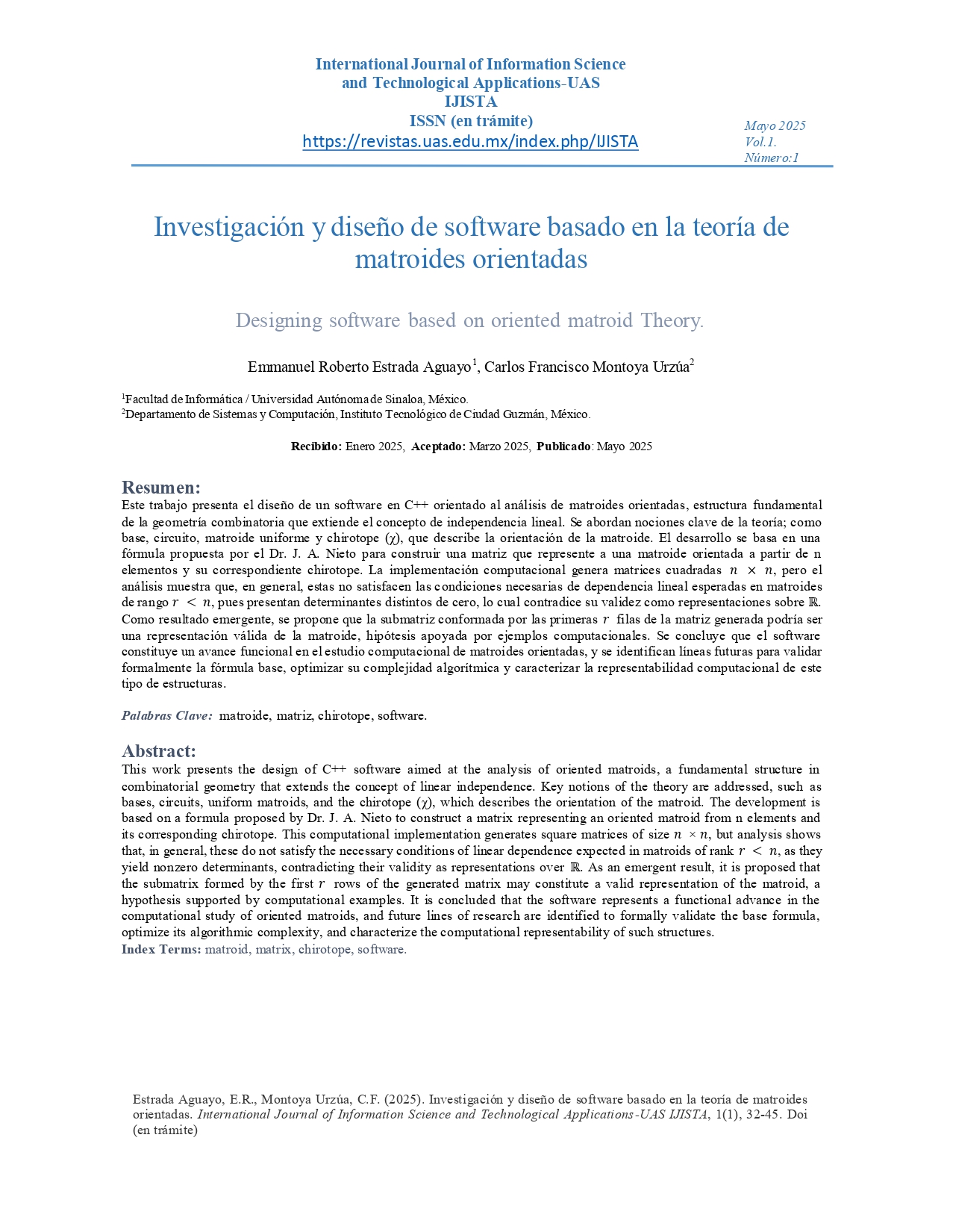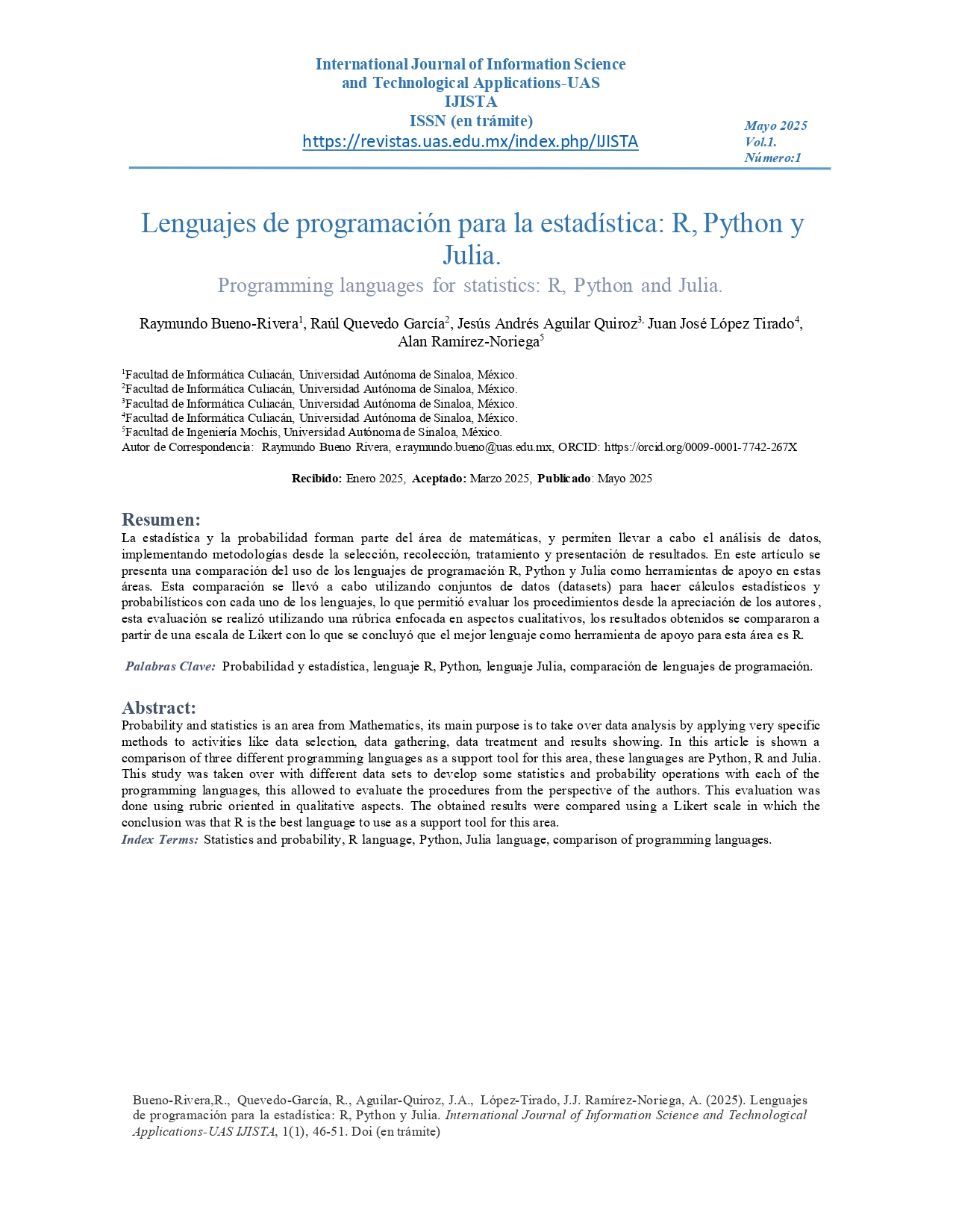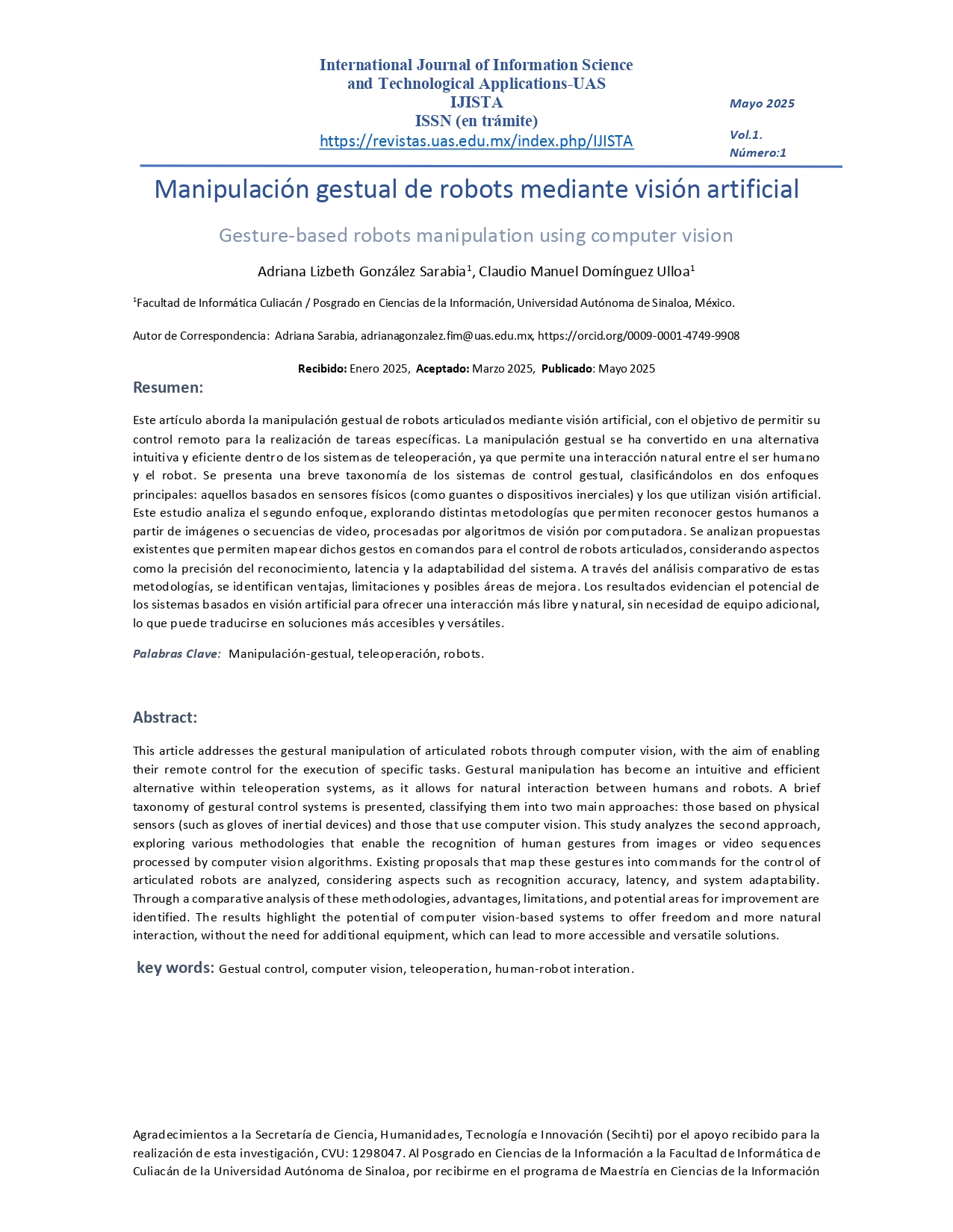Vol. 1 No. 1 (2025): International Journal of Information Science and Technological Applications-UAS IJISTA
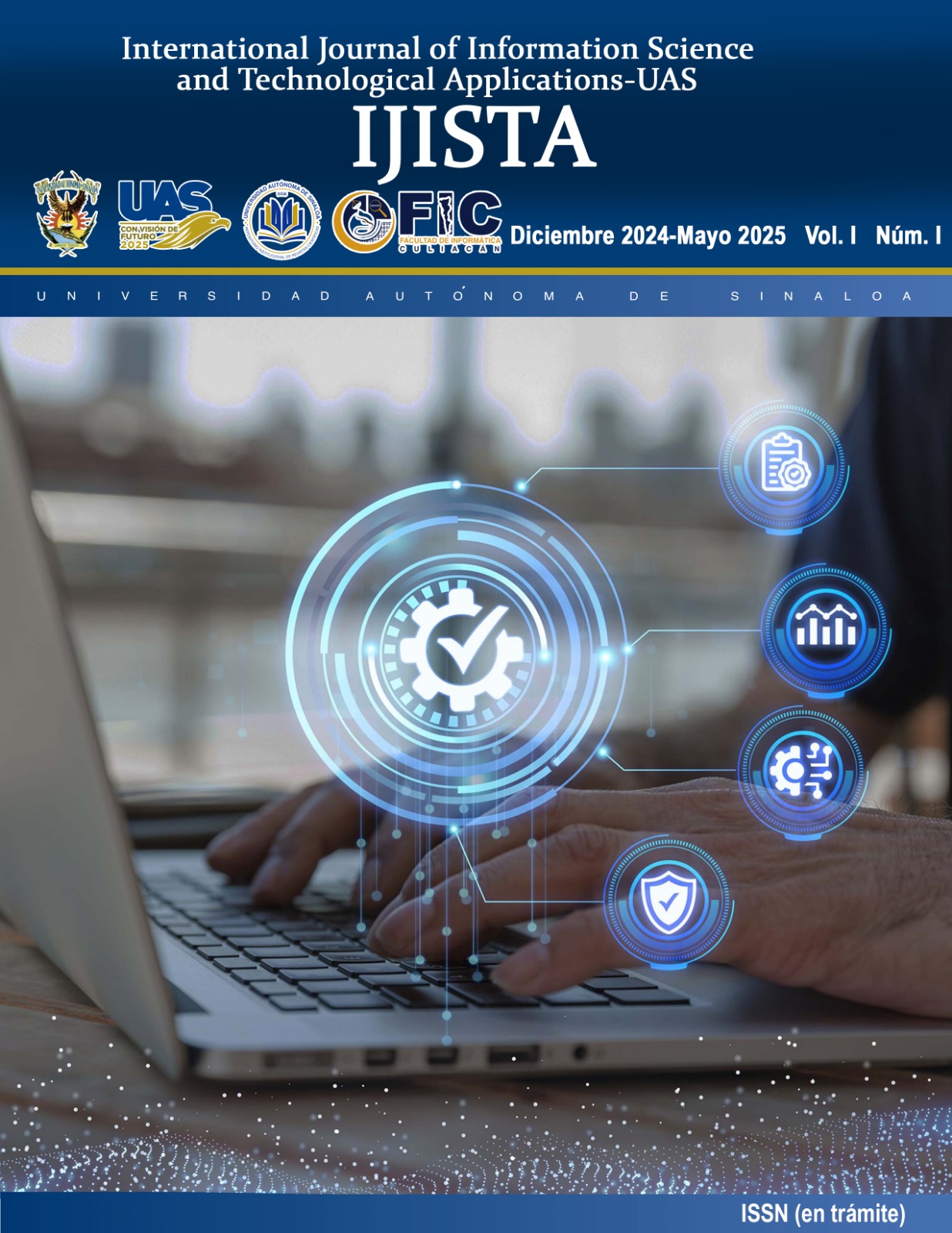
To the academic community, readers, and collaborators of International Journal of Information Science and Technological Applications-UAS IJISTA*
It is a pleasure to greet you on the occasion of the publication of the first issue of the International Journal of Information Science and Technological Applications-UAS IJISTA, an open-access journal edited by the Facultad de Informática of Culiacán at the Autonomous University of Sinaloa. This inaugural issue inaugurates a space for interdisciplinary dialogue that articulates technology, knowledge, and social responsibility, placing information sciences at the center of contemporary debates.
Two articles directly address the relationship between digital technologies and environmental management: Detection of seismic precursors with a low-cost embedded system and Applications of artificial intelligence for sustainable water management. Both propose solutions aimed at prevention, optimization, and decision-making in contexts of risk and scarcity. The first describes a low-cost device based on magnetometry, designed to detect geomagnetic anomalies that precede seismic events. The second, a systematic review, explores over 150 studies on artificial intelligence applied to drought prediction, water quality, and distribution network management, highlighting the convergence between algorithms, IoT sensors, and geographic information systems (Pérez-Aguilar et al., 2025).
These papers point out that technological efficiency it is not sustainable by itself; the access, adaptability and the implementation context are considerable factors to have in mind. In environments where the institutional infrastructure it is limited, it becomes essential in these kind of papers to develop technologies that are not only well defined, but sustainable and pedagogical.
The research projects "Programming languages for statistics: R, Python, and Julia" and "Research and design of software based on the theory of oriented matroids" make a special mention to two complementary areas; The statistical learning and the computational representation of complex mathematical structures.
The first one previously mentioned evaluates the execution of three programming languages through real datasets and a qualitative rubric. It can conclude that R, by it intuitive syntax, is natural approach to statics as well as its documentation ecosystem, it turns out to be more accessible to educational approaches (Bueno-Rivera et al., 2025). On the other hand, the second one does honorific mention on developing a software in C++ in order to represent oriented matroids, structures that happen to extend the lineal independence notion to geometrical and combinatory domains. The software allows to detect limits in the computational representability of these forms and propose experimental ways to surpass the previously mentioned restrictions (Estrada Aguayo & Montoya Urzúa, 2025).

